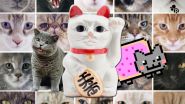(Press-News.org) Amsterdam, NL, 17 November 2014 - Two simple tests conducted during the neurological exam can help clinicians differentiate between early-stage Parkinson's disease (PD) and atypical parkinsonism. By asking patients to perform a tandem gait test and inquiring whether they are still able to ride a bicycle, clinicians can ascertain whether medio-lateral balance is impaired, a defining characteristic of atypical parkinsonism. These findings are published in the Journal of Parkinson's Disease.
This issue of the Journal of Parkinson's Disease also marks the inauguration of a new feature, "How I examine my patient," which is designed to help improve the clinical skills of physicians, allied health professionals, and other professionals involved in the care of patients with PD and other movement disorders.
The occurrence of a sideways or medio-lateral balance impairment is a "red flag" of atypical parkinsonism conditions, such as multiple system atrophy (MSA), progressive supranuclear palsy, or vascular parkinsonism. As the condition progresses, patients with this deficit often compensate by adopting a wide-based walking pattern, probably reflecting widespread pathologic brain involvement of the cerebellum and brain stem, explains Jorik Nonnekes, MD, of the Radboud University Medical Center, Department of Rehabilitation, Nijmegen, the Netherlands.
In contrast, patients with PD develop a shuffling gait, maintaining a narrow distance between their feet. Because medio-lateral balance is preserved, a PD patient may still be able to ride a bicycle even when walking is difficult.
In the first test, 36 patients with PD and 49 patients with atypical parkinsonism were given a tandem gait test. Patients were instructed to take 10 consecutive steps along an imaginary straight, thin line, toe-to-heel. An abnormal tandem gait was scored if one or more side steps were needed to maintain balance. The researchers found that 18% of patients with atypical parkinsonism were able to perform the tandem gait test without a single side step, compared with 92% of patients with PD. The results were similar for patients with only early disease (< 3 years).
Another study included 45 patients with PD and 64 patients with atypical parkinsonism, all of whom said they previously rode bicycles before the onset of motor symptoms. When asked if they still were able to ride a bicycle, 52% of the atypical parkinsonism patients said they had stopped cycling compared to 2% of those with PD.
"Both tests are easy to perform in clinical practice and have a good diagnostic accuracy, even early in the course of the disease," says Dr. Nonnekes. He adds that the tests should always be judged in the clinical context and presence of other red flags or supportive features.
In the new "How I examine my patient," feature researchers and clinicians will contribute practical information about how to conduct good neurological examinations. In many cases, the literature and even neurological textbooks do not include practical descriptions of very common clinical tests.
In the first example, "How I examine my patient: The art of neurological examination for Parkinson's disease and atypical parkinsonism," authors Bastiaan R. Bloem, MD, PhD, Department of Neurology, Radboud University Nijmegen Medical Center, the Netherlands, and Patrik Brundin, MD, PhD, Laboratory of Translational Parkinson's Disease Research, Center for Neurodegenerative Science, Van Andel Research Institute, Grand Rapids, MI, discuss how a well-done examination provides important diagnostic information. They write, "Details about how to perform certain clinical tests can be retrieved from standard neurological textbooks, but many useful clinical tips and tricks have been simply transmitted from teacher to student...such clinical pearls were never laid down in accessible form for a broad readership.
"We hope this new section offers readers a glimpse into the examination room of experienced clinicians who share their clinical pearls," say Dr. Bloem and Dr. Brundin.
INFORMATION:
Why is Jamaica, with a population smaller than that of Los Angeles, home to so many of the world's elite sprinters - runners who compete in the 100, 200, 400 and 800-meter races?
Robert Trivers, an evolutionary biologist and professor of anthropology and biology in the School of Arts and Sciences, set out with his colleagues to find out if there was something about the symmetry of their knees that might partly explain this phenomenon. They already knew from their earlier research that the symmetry of children's knees at age 8 predicts how fast a person runs 14 years later ...
The sun emitted a mid-level solar flare, peaking at 12:48 p.m. EST on Nov. 16, 2014. NASA's Solar Dynamics Observatory, which watches the sun constantly, captured an image of the event. Solar flares are powerful bursts of radiation. Harmful radiation from a flare cannot pass through Earth's atmosphere to physically affect humans on the ground, however -- when intense enough -- they can disturb the atmosphere in the layer where GPS and communications signals travel.
To see how this event may affect Earth, please visit NOAA's Space Weather Prediction Center at http://spaceweather.gov, ...
Here's another reason to pay close attention to microbes: Current climate models probably overestimate the amount of carbon that will be released from soil into the atmosphere as global temperatures rise, according to research from the US Department of Energy's Lawrence Berkeley National Laboratory (Berkeley Lab).
The findings are from a new computer model that explores the feedbacks between soil carbon and climate change. It's the first such model to include several physiologically realistic representations of how soil microbes break down organic matter, a process that ...
Fruit flies do not always conform to the norm. When female fruit flies have to decide where to lay their eggs, they take their lead from what they see most others in their group do. However, some do take their personal preferences into account. So says Marine Battesti of the Université Paris-Sud in France, lead author of a study in Springer's journal Behavioral Ecology and Sociobiology.
The site on which an insect chooses to lay her eggs is very important for the development and survival of future generations. Such choices are not fixed, but are influenced by the ...
UC Davis researchers are getting a new look at the workings of HIV and other viruses thanks to new techniques in electron microscopy developed on campus.
The envelope (or Env) protein of HIV is a key target for vaccine makers: it is a key component in RV144, an experimental vaccine that is so far the only candidate to show promise in clinical trials. Also called gp120, the Env protein associates with another protein called gp41 and three gp120/gp41 units associate to form the final trimeric structure. The gp120 trimer is the machine that allows HIV to enter and attack ...
WASHINGTON, Nov. 17, 2014 -- They are seemingly the most popular thing on the Internet, the subject of millions of videos and hundreds of memes: cats. This week Reactions answers some of the biggest kitty questions out there: Why does catnip make most cats go crazy? What does it mean when your cat rubs against your leg? How does kitty litter clump? Check out the nearly purr-fect video here: http://youtu.be/6_C9i-2QGeU.
Subscribe to the series at Reactions YouTube, and follow us on Twitter @ACSreactions to be the first to see our latest videos.
INFORMATION:
The American ...
ABBOTT PARK, Ill., Nov. 17, 2014 - People aged 65 and older, who were being treated for chronic obstructive pulmonary disease (COPD) in the hospital and received nutrition treatment (oral nutrition supplements) had reduced lengths of stay, hospital costs and chances of returning to the hospital within 30-days, according to a study published in CHEST.
Chronic obstructive pulmonary disease (COPD) -- which includes conditions like chronic bronchitis and emphysema -- is a lung disease that compromises breathing. As COPD often occurs among seniors, it is one of the leading ...
Alexandria, Va. -- Hurricane Sandy struck the U.S. East Coast in October 2012, leaving about $65 billion of damage in its wake and raising the question of how to mitigate the damage from future storms. It's a question that arises in the wake of most natural disasters: What steps can society take to protect itself from storms, floods, landslides, earthquakes, tsunamis or volcanic eruptions? But the question itself illustrates the complexity of preparing for natural disasters.
Our first instincts might be to protect ourselves as well as possible, but reality sets in quickly: ...
CORVALLIS, Ore. - Engineers at Oregon State University have identified a method to rapidly prepare frozen red blood cells for transfusions, which may offer an important new way to manage the world's blood supply.
It's already possible to cryopreserve human red blood cells in the presence of 40 percent glycerol, but is rarely done because of the time-consuming process to thaw and remove the glycerol from the blood. This can take an hour or more and makes it logistically difficult to use frozen blood.
However, some initial experiments and computer modeling of a proposed ...
RENO, Nev. - The everyday use of a GPS device might be to find your way around town or even navigate a hiking trail, but for two physicists, the Global Positioning System might be a tool in directly detecting and measuring dark matter, so far an elusive but ubiquitous form of matter responsible for the formation of galaxies.
Andrei Derevianko, of the University of Nevada, Reno, and his colleague Maxim Pospelov, of the University of Victoria and the Perimeter Institute for Theoretical Physics in Canada, have proposed a method for a dark-matter search with GPS satellites ...




